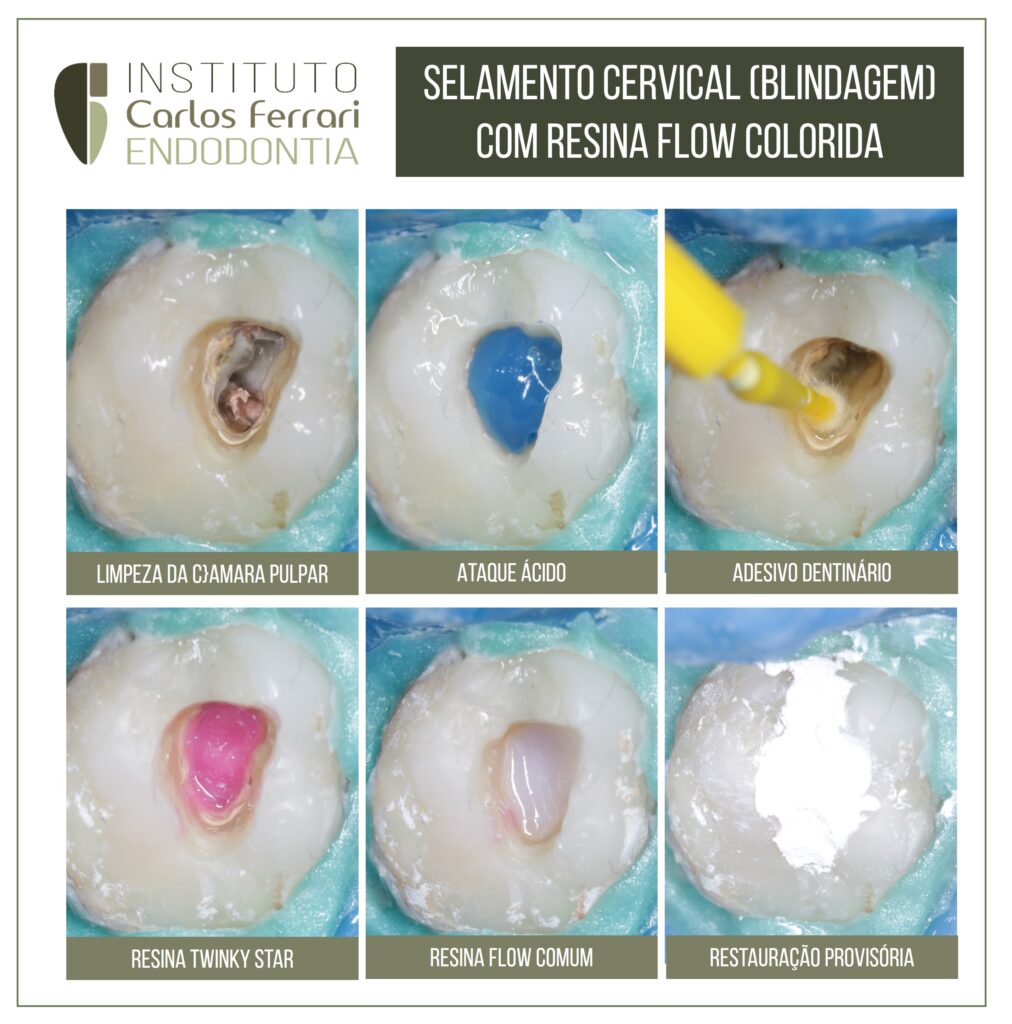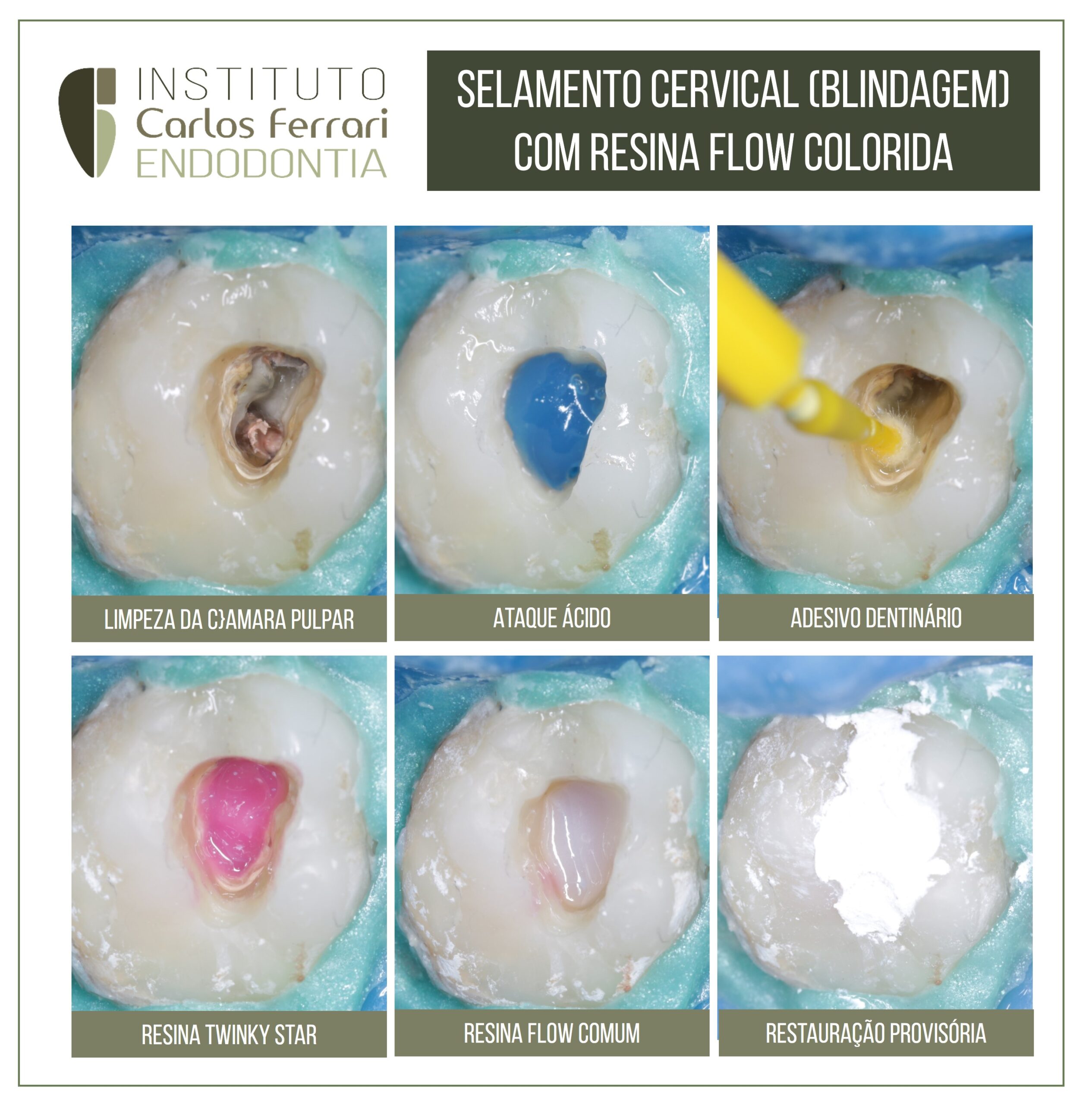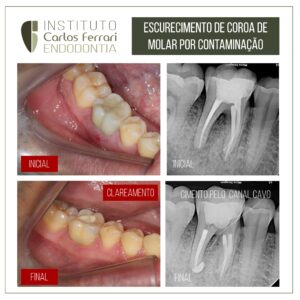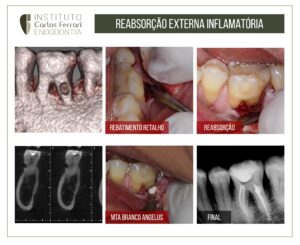
Blindagem endodôntica com resina pediátrica. Selamento coronário (blindagem) após tratamento endodôntico.
Utilização de resina pediátrica Twinky Star para selamento cervical após tratamento endodôntico.
A coloração facilita a localização dos canais radiculares num eventual retratamento.
In: Sanos et al. Importância do selamento coronário no sucesso do tratamento endodôntico. Braz. J. Hea. Rev, Curitiba, v. 3, n. 6, p.17797-17812. nov./dez. 2020.
1 INTRODUÇÃO
O tratamento endodôntico visa a manutenção dos elementos dentários, e o
reestabelecimento da função dos dentes com comprometimentos pulpares e periapicais. Para que
se obtenha sucesso no tratamento, é importante respeitar os princípios mecânicos e biológicos que
serão realizados ao decorrer do procedimento (OCCHI et al., 2011).
O aparecimento das doenças periapicais, está relacionado à presença de microrganismos
no interior do sistema de canais radiculares. O tratamento endodôntico tem como objetivo eliminar
as bactérias ali presentes e criar um ambiente onde elas não possam sobreviver (JAMALI et al.,
2020).
Para a obtenção do sucesso do tratamento endodôntico, é necessário fazer a completa
desinfecção do canal radicular, eliminando todos os microorganismos presentes, além de evitar recontaminação nos casos em que se faz necessário mais de uma sessão durante a terapia
(SALAZAR-SILVA; PEREIRA; RAMALHO, 2004).
A terapia endodôntica deve ser realizada por etapas, desde o diagnóstico e a criação de um
plano de tratamento, abertura coronária, limpeza química e mecânica, medicação intracanal (caso
seja necessária) até a obturação. Cada etapa tendo o seu objetivo, e se bem-feitas, resultará no
sucesso do tratamento. Entretanto, a garantia do sucesso ocorrerá através do selamento coronário
realizado de maneira correta (KHULLAR et al., 2013).
A terapia consiste na cura dos dentes afetados através da remoção do tecido doente, a
completa vedação do sistema de canais radiculares e a subsequente restauração da estrutura
dentária, promovendo saúde ao paciente e dando de volta função e estética ao elemento dentário
(OLIVEIRA et al., 2013).
A não realização do correto selamento coronário entre as sessões ou ao final do tratamento,
pode ocasionar na quebra desse material, expondo os canais obturados ao meio bucal, levando a
possível recontaminação. (SOUZA; SILVEIRA; RANGEL, 2011). (ZANCAN et al., 2015).
Esta revisão de literatura teve o objetivo de elucidar a importância do selamento coronário
para o sucesso do tratamento endodôntico.





